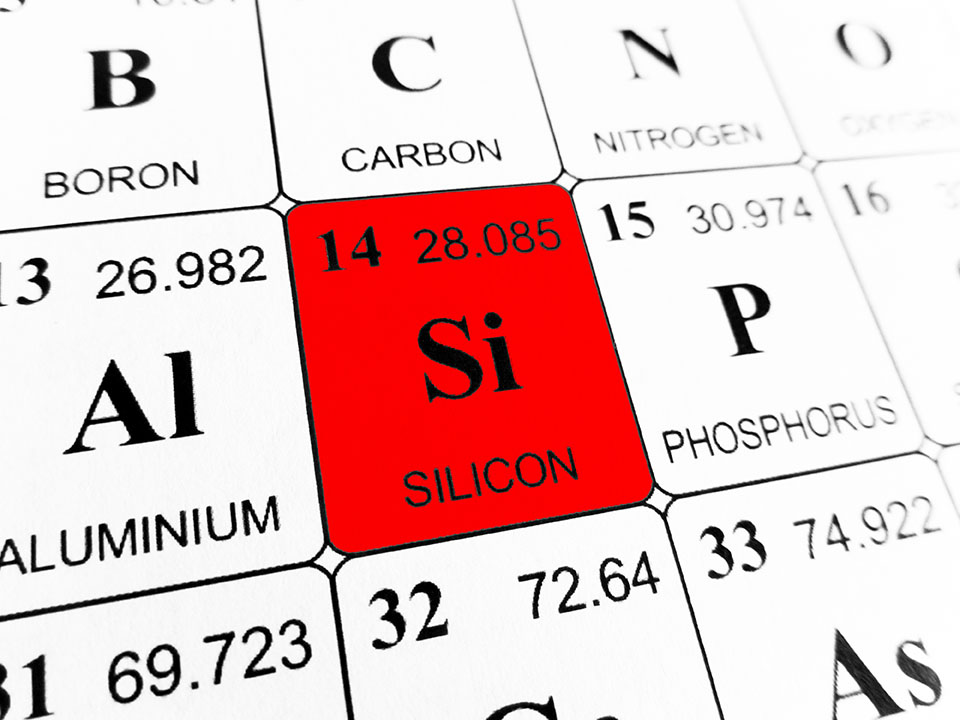
< Back
silicon
Definition
Silicon is a chemical element with the symbol Si and atomic number 14. It is a tetravalent metalloid, more reactive than germanium and tin, but less reactive than carbon and aluminium. Because silicon is chemically very similar to carbon, but less reactive, it is often called "the next best thing to carbon" in industrial chemistry. Silicon is the second most abundant element in the Earth's crust (after oxygen), making up about 28% of the crust's mass.
Silicon has a wide variety of uses, including:
- Semiconductors: Silicon is the most important semiconductor in the world. It is used to make transistors, which are the basic building blocks of computers and other electronic devices.
- Glass: Silicon dioxide is the main ingredient in glass. It is used to make windows, bottles, and other glass products.
- Ceramics: Silicon is used to make a variety of ceramics, including bricks, tiles, and pottery.
- Abrasives: Silicon carbide is a very hard material that is used to make abrasives, such as sandpaper and grinding wheels.
- Lubricants: Silicon oils are used as lubricants in a variety of applications, including engines, machinery, and medical devices.
How can the word be used?
The solar cell is made of silicon.

Different forms of the word
Noun:
- a nonmetallic chemical element with the symbol Si and atomic number 14. It is the second most abundant element in the Earth's crust, after oxygen.
- a semiconductor that is used in a wide variety of electronic devices, such as computer chips and solar cells.
Adjective:
- relating to or containing silicon.
Etymology
The word "silicon" comes from the Latin word "silex", which means "flint" or "hard stone".
The first recorded use of the word "silicon" in English was in 1811.
The word "silicon" is a Latin word, and it is related to the English word "silica".
Question
What is silicon used for?
AQA Science Exam Question and Answer
Question:
Explain the properties and significance of silicon as a chemical element, focusing on its role in electronic devices and its prevalence in Earth's crust.
Answer:
Silicon is a chemical element with unique properties that make it essential in various applications. It is a semiconductor, meaning it can conduct electricity under certain conditions, making it a crucial component in electronic devices. Silicon's ability to easily form covalent bonds with other elements allows it to create the intricate structures of transistors, diodes, and integrated circuits, forming the basis of modern technology.
In addition to its electronic applications, silicon is the second most abundant element in Earth's crust, making up around 28% of its composition. It combines with oxygen to form silicon dioxide (SiO2), also known as silica, which is a fundamental component of minerals like quartz and sand. This abundance of silicon in the Earth's crust contributes to the formation of rocks and minerals, playing a significant role in geology and shaping the landscape.
Silicon's versatile properties, both in electronics and as a major constituent of the Earth's crust, highlight its importance in both technological advancement and the natural world. Its unique ability to bridge the gap between conductors and insulators has revolutionised modern computing, while its prevalence in geological processes underscores its significance in shaping the planet's physical features.